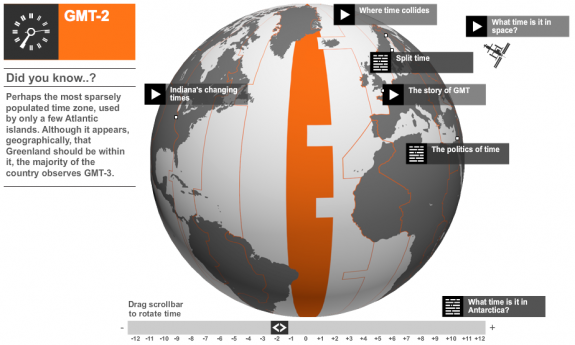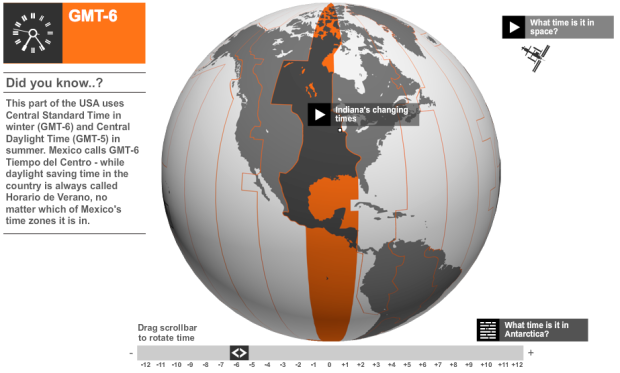Do you understand how time zones work around the world and when exactly you need to move your watch forward or back? Me neither. BBC News provides a brief history of time zones via interactive globe.
Theoretically, the world should be divide into 24 equal time zones, in which each zone differs from the last by one hour. But as the years have passed, the world has turned into a much more complicated place. Time zones are now much more irregular and sometimes seem positively eccentric, affected as they are by political, geographical and social changes in the real world.
Rotate the globe to see where each time zone lands. Some of the zones seem relatively straight, but even in some areas like the GMT-2 time zone, there’s some crookedness. There must be some small islands there or something. It’s either that or the Royal Observatory is fond of puzzles. No, there aren’t any other options.

[BBC News via @kelsosCorner]


 Visualize This: The FlowingData Guide to Design, Visualization, and Statistics (2nd Edition)
Visualize This: The FlowingData Guide to Design, Visualization, and Statistics (2nd Edition)

Nice map, and some interesting stories, but an annoying flash-based application. Once I click on an individual article (like “Split Time” above), I don’t see a way to head back to the main map.
If I reload the page or hit the browser’s back button, I start to see more and more video advertisements, and I have to wait for the ad to finish before I can use the application again.
Stefan – you just click “Back to world view” underneath the small globe…
@David: Thank you.